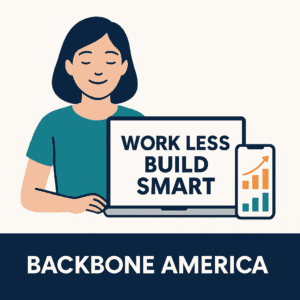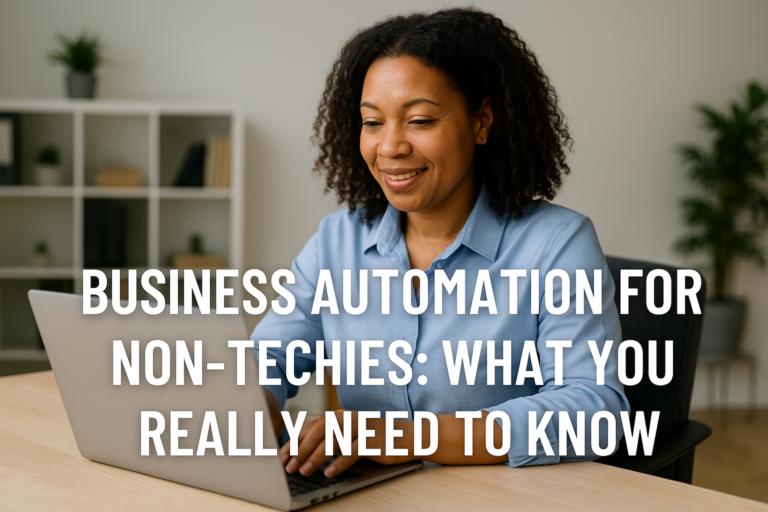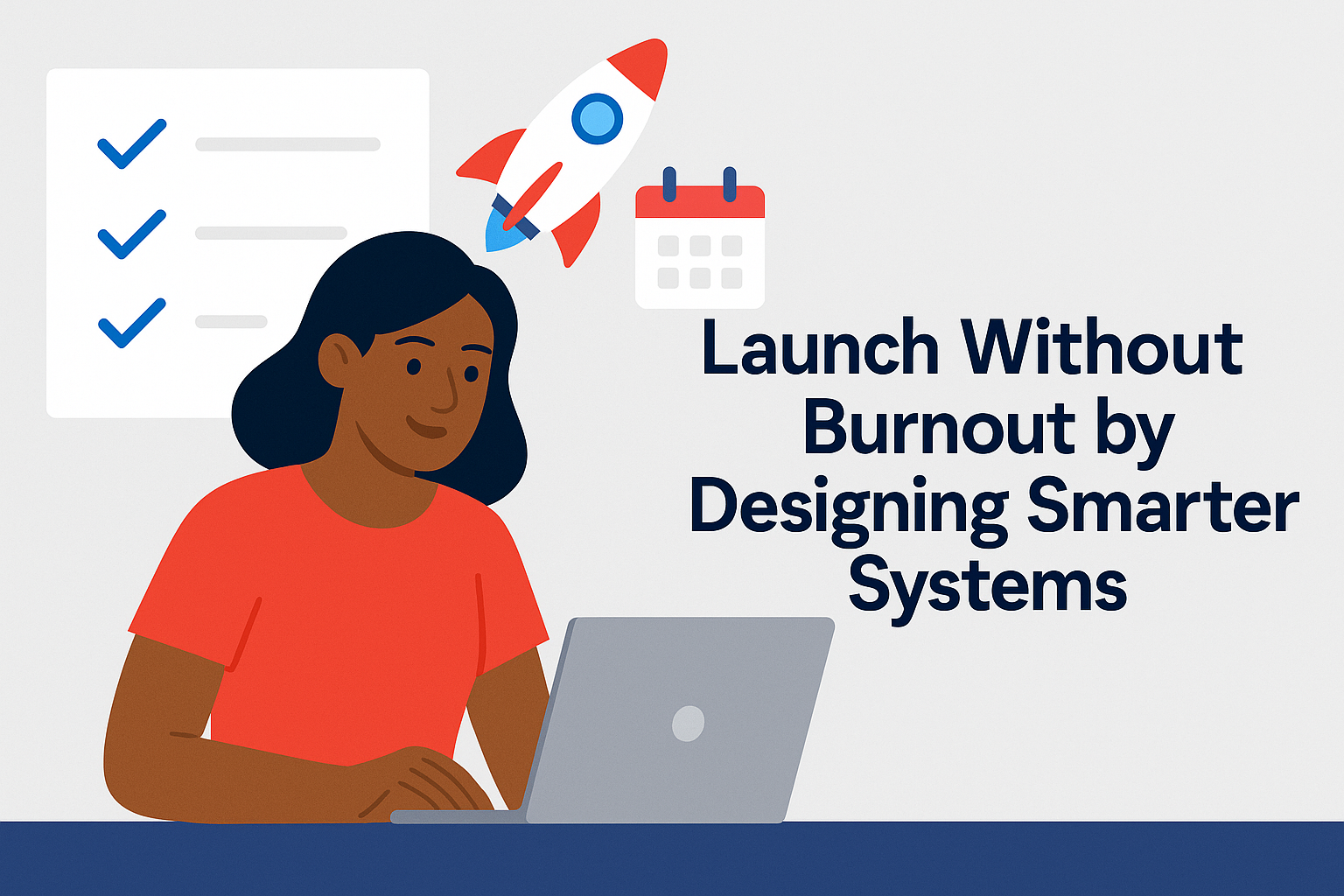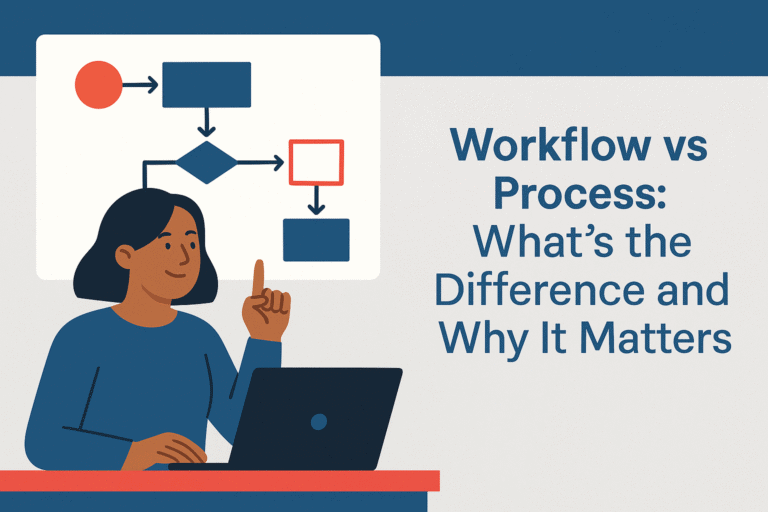Workflow Wednesday
When I went back to school to study software engineering, I wasn’t planning to build a business. I just wanted a job that didn’t burn me out. But what I found along the way—low-code automation—ended up becoming the exact solution I didn’t know I needed.
At the time, I was working full-time in a government role, still raising my youngest, and trying to revive Backbone America on the side. I had vision, I had motivation—but I didn’t have extra hours. What I needed was a way to build smarter, not harder. That’s when low-code automation entered the picture.
Instead of doing everything by hand—chasing leads, sending reminders, setting up calls—I started building systems that could handle it for me. Systems I didn’t need to code from scratch. Systems that ran while I was still at work or putting dinner on the table. That’s what changed the game.
Now, I teach other professionals how to do the same inside my course Work Less, Build Smart. Because if you’re anything like I was, you don’t need more hustle. You need more room to breathe.
What Low-Code Automation Actually Means

Think of it like this: instead of coding a solution line by line, you use a visual builder to map out what you want the system to do. Click here, drag this, connect that. Some tools give you the option to tweak the logic if you want to, but you rarely need to touch actual code.
If you’ve used Zapier, Zoho Flow, or Airtable Automations, you’ve already stepped into the world of low-code. These platforms let you connect apps, move data automatically, and trigger responses based on simple logic—without hiring a developer or opening a terminal window.
And if that sounds like a huge relief? It should.
As a Business Process Automation Engineer, I’ve used these tools in my 9-to-5 to help departments manage approvals, reports, and internal workflows without drowning in emails or spreadsheets. Bringing that same mindset into Backbone America wasn’t just a nice-to-have—it was essential.
Why Working Professionals Need It
Most of the professionals I talk to aren’t trying to go viral or chase unicorn startup dreams. They just want to build something of their own—without losing their sanity or security along the way.

But here’s the catch: when you’re already working 40+ hours a week, plus managing life and family, there’s not a lot of margin left for running a business. That’s where low-code automation becomes more than a convenience. It becomes your lifeline.
I remember the first time I realized how many hours I was losing to repetitive admin work—resending onboarding emails, copying and pasting client notes, manually tracking who downloaded what. None of it required creativity or strategy. It just had to get done. And it was draining me.
The shift happened when I started asking a different question—not “How can I get more done?” but “How can I stop doing this manually at all?”
That question led me to build automations using the same kind of low-code platforms I used at work: Zoho Flow to trigger task sequences, Zoho CRM to manage leads, Zoho Forms to qualify interest. The tools were already in my ecosystem. I just had to connect them.
The result? I got my evenings back. My brain wasn’t fried by busywork. And my business didn’t stall when I had to focus on my day job. That’s the difference low-code automation makes. It lets you show up strategically instead of constantly catching up.
How It Shaped the Work Less, Build Smart System
I didn’t set out to create a course—I set out to solve a problem. I needed a way to build a business that could run without me being in the middle of every task. That need became the blueprint for Work Less, Build Smart.
The entire system is built around one core idea: you can’t scale what you have to manually touch. And if you’re still working full-time like I was, there’s just no bandwidth to do everything yourself—not sustainably.
So instead of relying on hustle , I built automation into the foundation. Things like:
Sending welcome emails automatically after a purchase
Tagging contacts based on what they downloaded
Triggering task sequences in Zoho CRM after someone fills out a form

That’s the heart of Work Less, Build Smart: teaching other working professionals how to build systems that don’t demand full-time hours, even in the early stages. Systems that give you flexibility, control, and peace of mind.
Because the goal isn’t just to “start a business.” The goal is to create a business that doesn’t eat your life.
One Step You Can Take Today
You don’t need a full system overnight. In fact, most of the professionals I work with start small—often with a single low-code automation that saves them 15–30 minutes a day. It doesn’t sound like much until you realize that’s a full day’s worth of time every two weeks.
Here’s one of the simplest places to begin:
Connect a Zoho Form to Google Sheets.
Every time someone fills out your interest form, the data gets logged automatically in a spreadsheet—no copying, no email digging, no delay. If you already use Zoho, this kind of flow takes less than 20 minutes to build in Zoho Flow. And it works every single time, even when you’re off the clock.
Want to go one step further? Add a follow-up email that thanks them for their submission and offers a link to your most relevant offer. That’s two tasks handled—automatically.
These are the kinds of micro-automations that build momentum. You solve one friction point. Then another. Eventually, you look up and realize you’ve built a machine that works whether you’re in meetings, resting, or spending time with your family.
And that’s the magic of low-code automation: it helps you earn your time back in ways that actually matter.
What’s Really at Stake

But if you’re like most working professionals, you don’t have the time or energy to scale something that depends on your constant attention. Not when you’re already giving your best hours to a job that pays the bills.
That’s why low-code automation isn’t just a technical decision—it’s a strategic one. It’s the difference between surviving the next six months of juggling and actually building something that could support you long-term.
Every hour you spend doing things manually is an hour you could’ve spent creating value—refining your offer, connecting with clients, or just resting so you can come back stronger. And let’s be honest: burnout doesn’t care how good your intentions are. It shows up when your systems fall short.
When I finally stopped trying to do everything myself, things got lighter. Not overnight, but enough to breathe again. Enough to make space for clarity and progress.
If your business is depending on your willpower right now, it’s time to build something sturdier.
Conclusion
I didn’t build Work Less, Build Smart because I had extra time. I built it because I didn’t. Low-code automation helped me claim back hours I didn’t know I was wasting—and build a system that could grow without me being glued to it.
As I’m writing this, I’m on a 3-week holiday, exploring Southeast Asia. Every morning, I carve out an hour or two to check in on Backbone America—review a task, write a blog post like this one, answer a few messages. Then I put my laptop away and go explore.
I get to be a tourist and a business owner—because I built systems that support that rhythm.
This isn’t about luck. It’s about design. The same low-code automation principles I use to run my business from another continent are the ones I teach in Work Less, Build Smart. Because I know what it’s like to have a full-time job, a full plate, and a deep desire for something more.
So if you’re looking for a way to grow your business without working yourself into the ground, don’t wait for the perfect moment. Start with one system. One automation. One step toward freedom.
You don’t have to do it all alone. You just have to start building smart.






